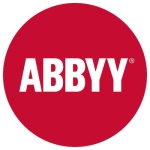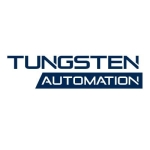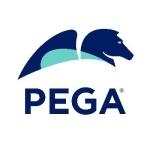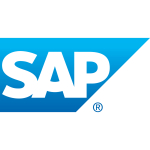What is our primary use case?
Our primary use case is banking/financial. Processes we have automated include loans, ledgers, mortgage loans, and even some of the record management systems.
How has it helped my organization?
In some of our use cases, people were spending more than three hours per day just generating reports. And then we created an automation for this and it reduced the time to 30 minutes. It improves employee productivity so they can use their time in other areas.
What is most valuable?
I like the way it works with structured data in the back office and the way it does repetitive work.
In terms of ease of use for developers, we're able to create reusable components. We don't want people to have to rebuild things from scratch. In this way, developers can take the reusable components and complete their development processes more quickly.
The bot creation process is pretty straightforward. Anyone can go in and learn it easily, and then they can build a bot. I like it.
What needs improvement?
When it comes to integrating the solution with other applications, there are some challenges. For some third-party solutions, there are no direct interconnections. For example, there were no direct connections with SAP systems. So, we had to create connectivity between Automation Anywhere and some third-party solutions. They have now improved that situation a lot and we can connect SAP and other systems as well.
If they want to sustain their position in the market, they have to be flexible, working on how we can integrate with third-parties, working on a machine-learning product. People are expecting that and it would be really helpful.
From the IQ Bot perspective, frankly speaking, they still have to improve a lot. I got IQ Bot training in San Jose. My expectation from a straight, technical, architectural point of view was that I would be able to create my own algorithm and integrate it. But with IQ Bot, I am not able to integrate anything. It is already well-defined, so I have to use that particular option only. I know I can not go with any other machine-learning platform. I hope they will be coming out with version 12 where we can integrate it with Python algorithms and other stuff. It might only be in the future, it might only be on the roadmap. But as of now, it is lacking a lot in that area. We are expecting, for most of the documentation, things like tags, that there would be a checkbox option. That's lacking in IQ Bot.
What do I think about the stability of the solution?
The stability has increased a lot. When we started with version 10.2, there was a lot of instability. There was no way we could keep the bots active, there were scenarios where it became disconnected. There is also the code deployment perspective and a lot of other angles. People are always only thinking from the business perspective, but as a technical architect, I think about operational effectiveness and how they can improve the product's maturity.
The stability has improved a lot.
However, when upgrading, they changed their internal architecture. They moved it to a JT Java platform. When moving, some of the existing features did not work in the new version. It might be that they have to improve their regression testing to improve clients' satisfaction. It can happen that what is running in production currently, if I move to a new version, suddenly is not working tomorrow. People are not happy with that and say, "I want to roll back to the older version." They are not able to use the new features.
When moving to a new version, they have to think about what features people are using and what kind of impact there will be. Small business users will be fine, those who have ten bots or 15 bots. But there are organizations like mine that have around 700 to 1,000 bots, and that makes changes very difficult to handle. It could be that 10,000 tasks are using something and if that thing is changed it will be hard to update. I might have to spend a year on that. People will never accept that.
What do I think about the scalability of the solution?
Scalability-wise, they have increased it a lot, based on the clustering method. As a technical architect, I'm going with always-on production and data centers. That means that if any data center goes down - there is a natural disaster or something else that happens - how do you make it such that you can bring up another data center? I'm coming up with a design for that based on the latest version, version 11.
How was the initial setup?
The initial setup is very simple. It's Windows-based and it's a straightforward installation. We used to say they need to come up with a silent installation option, with the previous version. But now, with version 11, they have introduced, even at the server level, a silent installation. That means we can make it automated instead of manually installing it.
What was our ROI?
We measure the ROI of automated processes by how much of a benefit we're getting from it. We look at how much time it takes and how many robots we're using and we include the licensing and operations costs. Finally, we take into account how much faster the performance of the bot is, compared to how long it took to do the process before automation.
We have saved time and money, but when people think of going with RPA they cannot expect that they will immediately see ROI. They have to sustain and increase the RPA options. They will have to spend a minimum of one or two years increasing their use cases for automation. Then they will see a good ROI. They should not expect, within three months, to say, "Hey, I have automated, where is the ROI?"
What other advice do I have?
All organizations have a certain strategy or checklist. In this case, management will think first about licensing cost, about the total cost of investment. After that, they will think about the product's features and functionality. They will also look at support. They will consider the use cases, the current processes they have identified already, and based on all that they will decide whether to go with Automation Anywhere or another product.
In terms of our bot creation process, people come to me and say, "I have a process. How do we automate it?" We need to understand if it's a cognitive use case or a straightforward use case. If it's straightforward, we tell them we'll use this product and build it for them with four to six weeks of development. Then it can go to production. If it's cognitive, then we really need to understand it better. We need to use a third-party product, like Kofax or maybe an IQ Bot if it is fit for the scenario. Based on that, it takes some time and then we'll move it to production.
We have a process architecture review committee where we review all the processes. We cannot blindly go forward with all the processes that have scope for automation because it's all licensing cost. We need to think about whether we can automate a given process with any other IT automation solution, like scripting or macros. If that is not possible then we have a fit for RPA. Then we have to go through our checklist, walk through the use cases, and look at the percentage of the automation scope: Is it a 100 percent automation scope or 80 percent or 20 percent? We need to to know if there is any manual validation or manual intervention required and how that is handled.
Initially, we failed with the Citrix automation where we have a lot of use cases. We ran into a lot of limitations with Automation Anywhere in version 10.5. But with version 11, they have AI Sense which we can use for Citrix applications. We are currently exploring this option.
I have taken courses at the Automation Anywhere University and I have advanced professional certification from Automation Anywhere, which I completed for version 10.5. I'm also doing it for version 11. I also have an official certificate for IQ Bots.
At the moment, for us, everything is on-premise. We're not ready to go with cloud. So we have to build our own platform. We have to build our own bots.
I would rate this solution at seven out of ten. They have to improve on the product's maturity level. When they are introducing new versions, they have to conserve the existing commands and features, so that they work when we move to the new version. And they also have to come up with more flexibility, so their solution can integrate with our scripting and our own algorithms. That will make it easy to convince our business areas to increase the adoption of RPA.
Disclosure: I am a real user, and this review is based on my own experience and opinions.


















